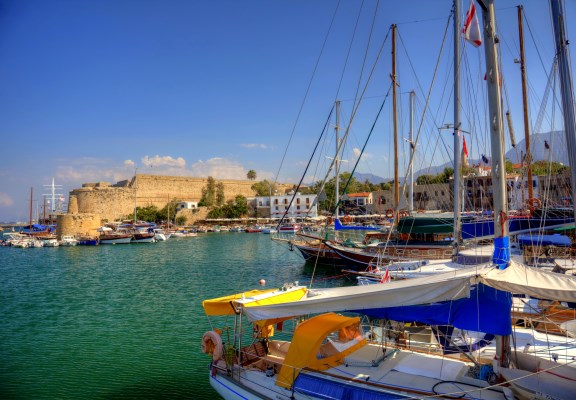St. Barnabas – Patron Saint of Cyprus
Bellapais Abbey
25 October, 2009Standing on a slight rise and overlooking the huge necropolis of Salamis is the twin- domed church dedicated to St. Barnabas, patron saint of Cyprus. This church, now used as an icon museum with the ancillary monks’ cells housing an impressive collection of Cypriot artefacts dating from the 7thCentury BC to the 18thCentury AD, still retains an air of sanctity and peace. Somewhat illogically on an island of mixed religious beliefs it remains a place of pilgrimage for both Muslim and Christian. Maybe this can be explained by the simple fact that Cyprus is an island where cultures and creeds have crossed, intermingled, blended, and divided over a period far in excess of the previous two thousand years, and each successive belief takes with it some vestige of the one they have left behind. The cultures that worshipped the moon and stars, gave way to those that worshipped pagan idols. These in turn were superseded by faiths that believed in an Almighty Creator and by the time the Romans gained power over the island there was a strong following of Judaism.
Barnabas was a Jew from Salamis who travelled to the Holy Land to study law and while there he met the apostle Paul and was converted to Christianity. On returning to Cyprus, (pertinent Bible references: Acts 4: 36-37, & Acts 13: 1-5) he preached the teachings of Jesus Christ and in 61AD was martyred by his fellow Jews. His death by stoning is the stuff of which legends are made, and traditionally it is accepted that his companion John Mark and other followers hid his body in a secret tomb, where it was destined to remain undisturbed for the next 400 years. That tomb was part of the Salamis necropolis and lay undiscovered until the 5th Century AD.
When the tomb was revealed to Bishop Anthemios circa 480AD, with the body of Barnabas holding an illuminated Gospel of St. Matthew, the Bishop, head of the Cyprus church considered this was enough of a miracle to justify his request to Zeno, the Byzantine Emperor, the right to autocephalous status and with it all the benefits of self-governorship. For example revenues accrued in Cyprus would remain on the island rather than be transferred to the See of Antioch. The request was granted and the Orthodox Church of Cyprus took its place in the hierarchy of the Christian churches and has its own Patriarch. Barnabas was canonized and created the Patron Saint of the island. It is an icon of Barnabas, holding St. Matthew’s gospel that is placed in the backrest of the Bishop’s chair, though regrettably there are now few remaining in those churches of Northern Cyprus that are open to the public. A rather quirky patronage for which Barnabas is responsible, is that he protects against hailstorms!
The original Byzantine church crumbled over the succeeding years and was replaced in the 18thCentury by the present structure. Originally built with three domes, the minimal foundations at the apse end subsided in soft soil with the resulting collapse of one dome and the apse. The repairs that were carried out effectively shortened the nave of the church and did not replace the third dome, giving the church a rather squat and square appearance. The walls of the original apse can still be seen at the eastern end.
Very close to the church is a 19th century small chapel/mausoleum erected over the tomb site and visitors flock to pay their respects most especially on St. Barnabas’s feast day of June 11th.





